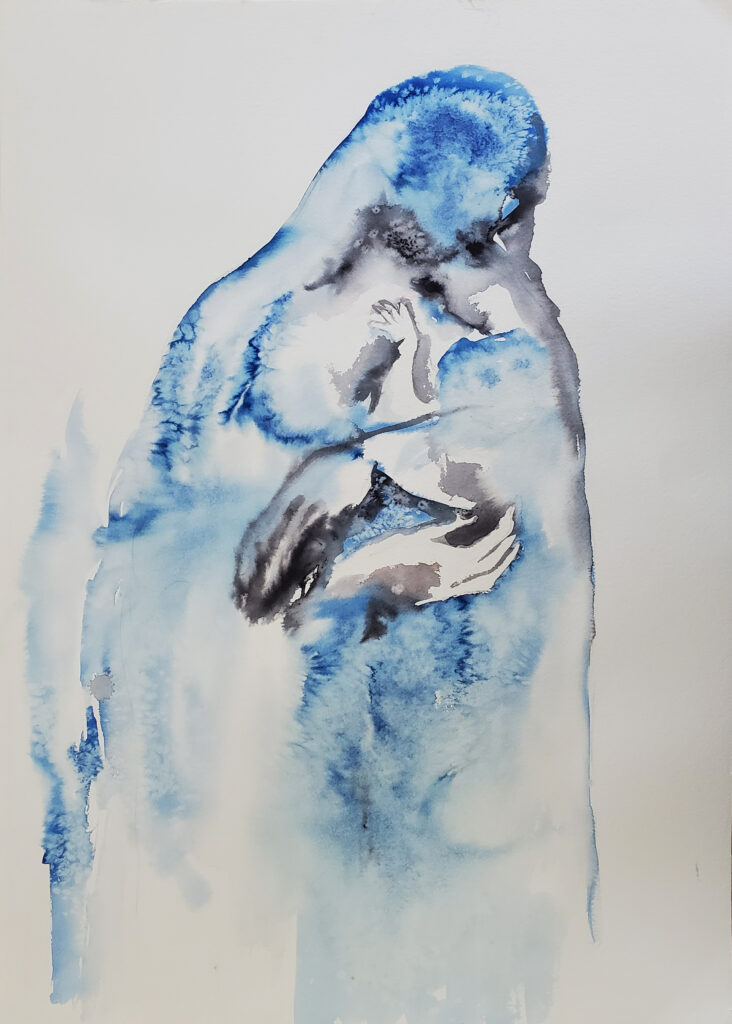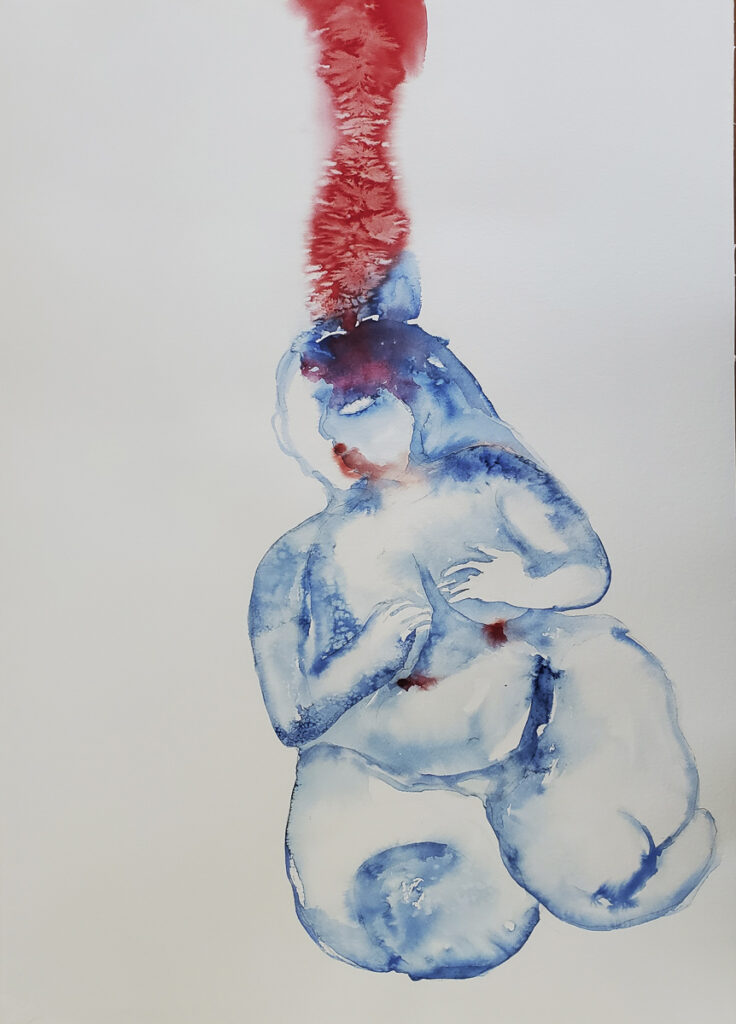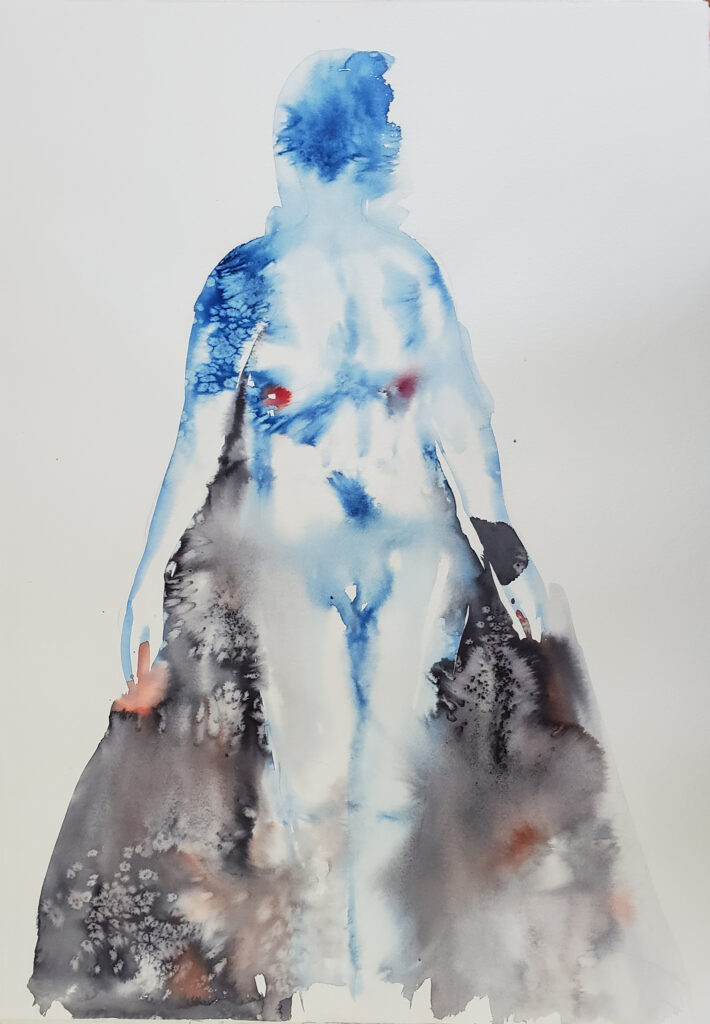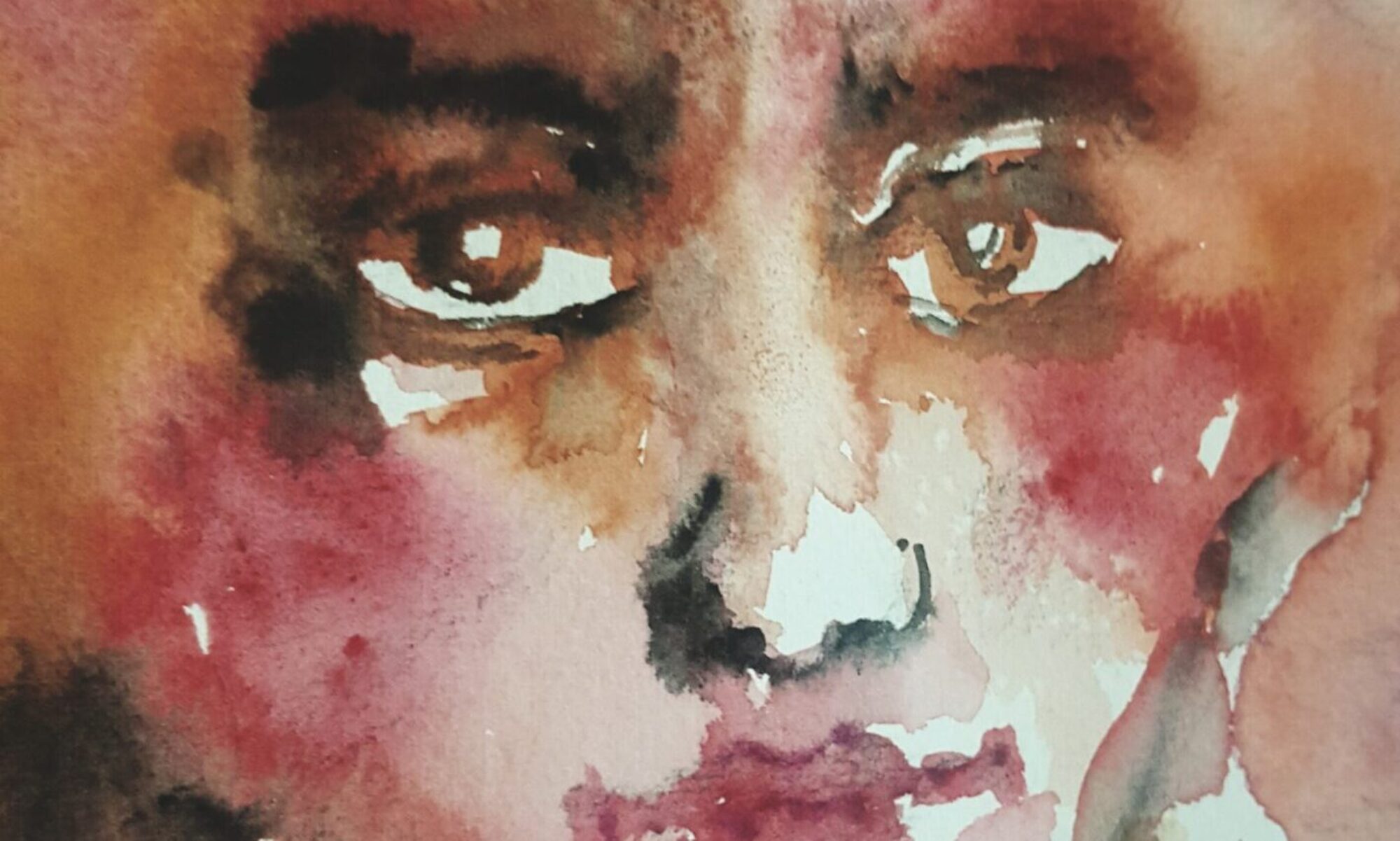The color blue carries diverse meanings for each individual. Bright shades have been known to encourage calm and clarity, while darker ones can appear tumultuous, or mysterious, like the night sky. In an Indian myth, during a crisis, gods and demons united to churn the ocean, though in their efforts, they released the deadly poison ‘Halahala.’ Lord Shiva, in order to save the universe, consumed the poison and– with the help of the goddess Shakti– turned blue.
Halahala symbolizes negative unconscious forces, suggesting we choose whether to succumb to it. The ‘Blue’ art series signifies this poison, representing societal issues. The works depict women breaking free from norms, celebrating their endurance against abuse and objectification. Blue reflects the current societal struggles, mirroring a call for change akin to a ‘Samudra Manthan,’ crucial for humanity’s salvation. The historical context adds layers to the color’s significance, portraying it not just as calming but also associated with melancholy and tragedy by artists like Matisse and Picasso.
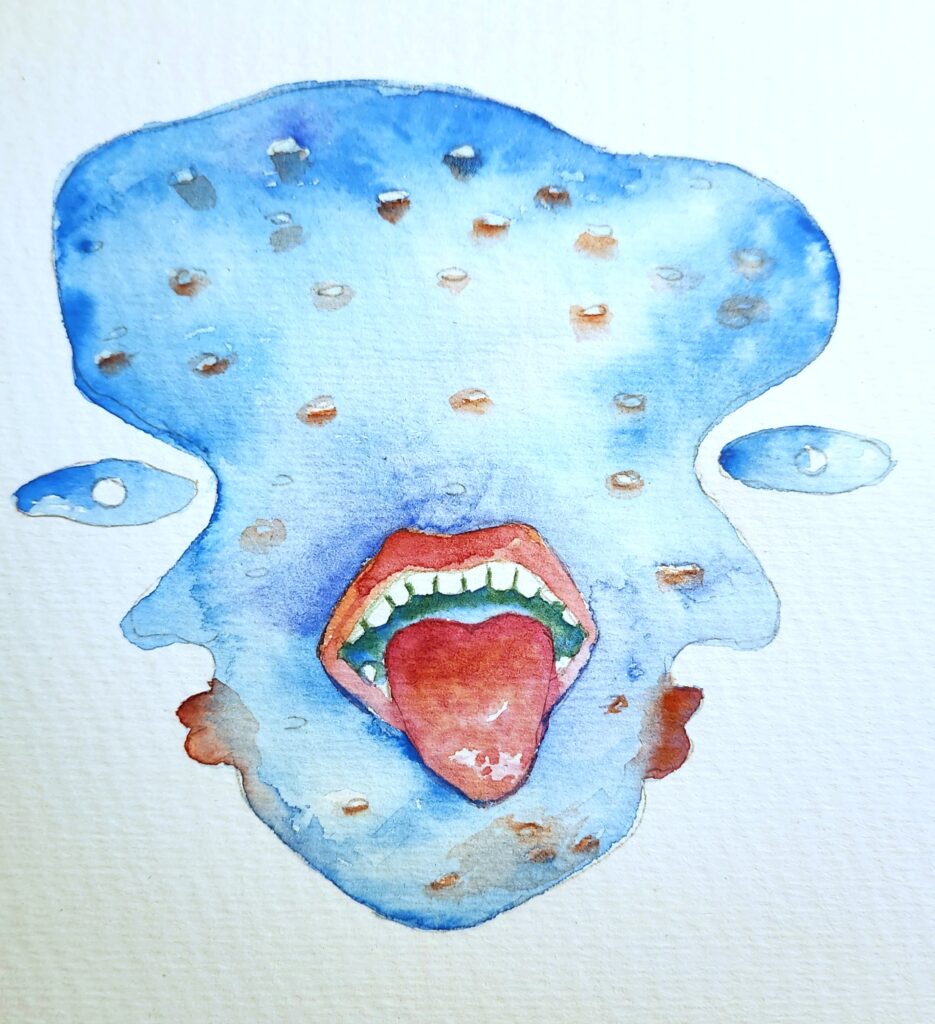


‘The Siren’ 10″ x 6″, Watercolor, 2022
